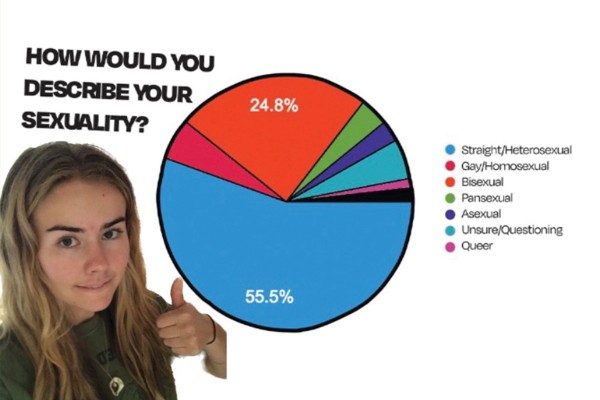Let me get this out of the way: I’m a very straight, stereotypical cis-woman. If you look at me, there’s little doubt in your mind that my favourite colour as a young girl was pink, that my first crush was Dan Carter, and that Azealia Banks Twitter lore draws a blank (had to consult the office for that one).
I don’t have to look far to see myself represented in the mainstream – most stores cater exclusively to girls like me; books, movies and TV shows are obsessed with heterosexual romances; and the nuclear family is epitomised by my high school sweetheart parents, older sister, and a couple pets. There haven’t been many instances in my life when I’ve felt on the outskirts of society or that the media has felt completely unrelatable for me. This is not true for the queer community – and this issue of Critic Te Ārohi is for you.
When you think of a queer student audience, your mind probably goes to the rainbow crossings of Pōneke Wellington where Docs stomp, carabiner keys jangle, and mullets blow in the perpetual wind. You don’t tend to think of little old Ōtepoti, where Castle St is the epitome of the gender binary (sororities and fraternities) and where we rub shoulders with our Southland neighbours. But you might be surprised – we have been at Critic. The Critic Census last year showed that only 55% of 1000 students identified as straight, and this year (sitting at around 500 responses) it’s about 50%.
As I editorialised a couple weeks ago after putting Winston Peters in the naughty corner, it’s been a scary time for queer folk. Not that any point in time has ever been entirely safe, given the stories that one Ōtepoti artist, a local older gay gentleman named John, shared in this issue’s feature about those who went to prison when homosexuality was literally illegal in Aotearoa. Or as he put it: “Two people of the same gender showing their physical love for one another.” And, unfortunately, in the modern-day you still get instances like Capping Show repeatedly using “gay” as the punchline to jokes, the University dragging its feet on unisex bathrooms, and lecturers stumbling on the use of they/them pronouns.
What shone through in this issue, though, was the strength of Ōtepoti’s rainbow community – whether through John’s reflections on the past 50 years or Madeline’s love letter to the queer folk of the present. You tend to forget that being a university town, Dunedin is more liberal and progressive than we give it credit for. The younger generation, while still living in an age where politicians are importing culture wars, have also joined together in rainbow hubs like Woof! to express themselves without fear, to rally together in opposition to marginalising political bills, and to admire artistry from drag queens and various zines – like the ‘Bussy Galore’ Winston Peters zine in this week’s Local Produce (it’s epic).
Given the diversity of the queer umbrella, there was only so much we could capture in this issue. Our hope is that for anyone who hasn’t seen a lot of themselves in the mainstream, this issue will make you feel seen; and that if you have struggled to find a community in Dunedin, that it’ll provide some direction towards the people who will welcome you with open arms, who will give recommendations for slightly unhinged reading material and not meet Azealia Banks references with a blank stare.



